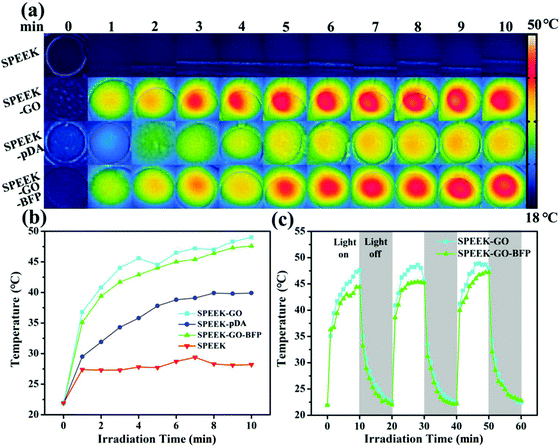 Open Access Article
Open Access ArticleCreative Commons Attribution 3.0 Unported Licence
Correction: Two-dimensional nanocoating-enabled orthopedic implants for bimodal therapeutic applications
Song
Wang
ab,
Chunyan
Duan
c,
Weizhong
Yang
a,
Xiangyu
Gao
a,
Jiacheng
Shi
a,
Jianping
Kang
b,
Yi
Deng
 *ade,
Xiao-Lei
Shi
*ade,
Xiao-Lei
Shi
 fg and
Zhi-Gang
Chen
fg and
Zhi-Gang
Chen
 fg
fg
aCollege of Materials Science and Engineering, School of Chemical Engineering, Sichuan University, Chengdu 610065, China. E-mail: dengyibandeng@scu.edu.cn
bDepartment of Spine Surgery, the Affiliated Hospital of Southwest Medical University, Luzhou 646000, China
cSchool of Basic Medical Sciences, Southwest Medical University, Luzhou 646000, China
dState Key Laboratory of Polymer Materials Engineering, Sichuan University, Chengdu 610065, China
eDepartment of Mechanical Engineering, The University of Hong Kong, Hong Kong SAR, China
fCentre for Future Materials, University of Southern Queensland, Springfield Central, Queensland 4300, Australia
gSchool of Mechanical and Mining Engineering, University of Queensland, Brisbane, Queensland 4072, Australia
First published on 18th August 2020
Abstract
Correction for ‘Two-dimensional nanocoating-enabled orthopedic implants for bimodal therapeutic applications’ by Song Wang et al., Nanoscale, 2020, 12, 11936–11946, DOI: 10.1039/D0NR02327B.
The authors regret that it was not clear in the original article and ESI that the control group data (SPEEK and SPEEK-GO) and SPEEK-pDA data had been reproduced from their related Chemistry of Materials paper, ‘Graphene Oxide and Adiponectin-Functionalized Sulfonated Poly(etheretherketone) with Effective Osteogenicity and Remotely Repeatable Photodisinfection’ (DOI: 10.1021/acs.chemmater.0c00290). Although the Chemistry of Materials article was cited, it was not made clear that some of the data was reproduced from this article and therefore the appropriate figure captions have been updated to reflect this.
In addition, the authors regret errors in the labelling of Fig. 3. The corrected Fig. 3 is shown below and the description of this figure on page 11940 starting on line 5 of section 3.2. should read as follows:
As can be seen in Fig. 3a, the SPEEK-GO, SPEEK-pDA, and SPEEK-GO-BFP substrates all showed certain photothermal conversion functions, but there was no obvious photothermal effect for the SPEEK samples. SPEEK-pDA showed poor photothermal action reaching 39.6 °C; nevertheless, the heated SPEEK-GO samples achieved 48.6 °C under NIR illumination for 10 min (Fig. 3b), suggesting the GO nanosheets have a better photothermal conversion function than the pDA nanolayer. Besides, the SPEEK-GO-BFP samples exhibited a similar heated temperature to SPEEK-GO…
 | ||
| Fig. 3 Photothermal properties of various SPEEK samples exposed to an 808 nm NIR laser (0.5 W cm−2): (a) NIR thermal pictures and (b) photothermal heating curve; (c) light on–off cycles of SPEEK-GO and SPEEK-GO-BFP. The SPEEK, SPEEK-GO and SPEEK-pDA data in (a) and (b) have been reproduced with permission from ‘Graphene Oxide and Adiponectin-Functionalized Sulfonated Poly(etheretherketone) with Effective Osteogenicity and Remotely Repeatable Photodisinfection’ (DOI: 10.1021/acs.chemmater.0c00290). Copyright 2020 American Chemical Society. | ||
The remainder of the corrected figure captions are shown below.
Fig. 2 Surface characterization of the GO/oligopeptide-decorated SPEEK. (a) Surface morphology, (b) water contact angle, and (c) Raman analysis of different SPEEK substrates; (d) XPS of SPEEK, SPEEK-GO, SPEEK-BFP, and SPEEK-GO-BFP; (e) high-resolution spectra of C 1s for SPEEK-GO-BFP. The SPEEK and SPEEK-GO data in (a), (b) and (d) have been reproduced with permission from ‘Graphene Oxide and Adiponectin-Functionalized Sulfonated Poly(etheretherketone) with Effective Osteogenicity and Remotely Repeatable Photodisinfection’ (DOI: 10.1021/acs.chemmater.0c00290). Copyright 2020 American Chemical Society.
Fig. 4 Cellular compatibility and osteogenicity tests: (a) cyto-viability, (b) LDH leakage, (c) cellular shape of osteoblasts cultured with different SPEEK samples. Red arrows point to filopodia; (d) ALP production, (e) quantification of calcium matrix staining, (f) RT-PCR analysis for osteoassociated genes. & and &&: p < 0.05 and p < 0.01 compared with other groups, *: p < 0.05. The SPEEK and SPEEK-GO data in (a)–(f) have been reproduced with permission from ‘Graphene Oxide and Adiponectin-Functionalized Sulfonated Poly(etheretherketone) with Effective Osteogenicity and Remotely Repeatable Photodisinfection’ (DOI: 10.1021/acs.chemmater.0c00290). Copyright 2020 American Chemical Society.
Fig. 6 (a) Schematic diagram illustrating the performance of the push-out testing and (b) push-out force of the multifunctionalized PEEK implants following implantation at weeks 4 and 8. (c) SEM images of bone ingrowth and adhesion onto the different implants. Red boxes are the enlarged view of the corresponding images. Green indicates the hemocytes. *: p < 0.05. The SPEEK image in (c) in the top left panel and the image below have been reproduced with permission from ‘Graphene Oxide and Adiponectin-Functionalized Sulfonated Poly(etheretherketone) with Effective Osteogenicity and Remotely Repeatable Photodisinfection’ (DOI: 10.1021/acs.chemmater.0c00290). Copyright 2020 American Chemical Society.
Fig. 7 Antibacterial activities of the 2D nanocoatings with or without light: (a) spread plate images with antibacterial efficiency, and (b) live/dead staining of Gram-positive/negative bacteria. (c) Schematic diagram of antibacterial phototherapy through combined PDT and PTT. &: p < 0.05 compared with other groups, *: p < 0.05, **: p < 0.01. The SPEEK and SPEEK-GO data in (a) and (b) have been reproduced with permission from ‘Graphene Oxide and Adiponectin-Functionalized Sulfonated Poly(etheretherketone) with Effective Osteogenicity and Remotely Repeatable Photodisinfection’ (DOI: 10.1021/acs.chemmater.0c00290). Copyright 2020 American Chemical Society.
Fig. S2 SEM observation of bone-like apatite nodules formation on 2D nano-coatings after immersion in SBF solution. The SPEEK and SPEEK-GO data in Fig. S2 have been reproduced with permission from ‘Graphene Oxide and Adiponectin-Functionalized Sulfonated Poly(etheretherketone) with Effective Osteogenicity and Remotely Repeatable Photodisinfection’ (DOI: 10.1021/acs.chemmater.0c00290). Copyright 2020 American Chemical Society.
The main conclusion and novelty of the work, the SPEEK-BFP and SPEEK-GO-BFP materials and their mechanisms, have not been affected.
The Royal Society of Chemistry apologises for these errors and any consequent inconvenience to authors and readers.
| This journal is © The Royal Society of Chemistry 2020 |
